Plantar Fasciitis: What is it?
How to Self-Manage Heel PainGet the ankle moving! When ankle motion is limited, it changes how efficiently the ankle can move. A major cause of limited ankle movement is tightness in the calf muscles. If the calf muscles are tight, other structures—including the plantar fascia—may absorb extra stress. The plantar fascia can only tolerate extra stress for a certain period of time before it becomes aggravated. Keeping the ankle moving can help minimize the risk of developing heel pain. Heafner Health Advice: For this specific exercise, make sure you are driving your knee directly over the second toe. This will minimize the tendency to over-pronate (collapse through the arch). Do not forget about the Big Toe Limited extension of the big toe (bringing your big toe towards your nose) is often limited in people with heel pain. This typically occurs because extending the big toe while walking or running takes the slack out of the plantar fascia tissue, creating more tension. If local stabilizing muscles do not support the tissue, it can become irritated. Heafner Health Advice: Keep your heel together while lowering into the stretch. With the big toes and heels locked, the stretch will feel significantly greater in the foot and calf. We have addressed motion, now lets strengthen! Weak calf muscles are a major predictor of heel pain. If the calf muscles are not doing their job, other structures are at risk for injury. Additionally, people will weak calves commonly over-pronate because they cannot control their foot mechanics Heafner Health Advice: Keep your heels together while pressing up into the raise. When lowering down, move through the entire movement to work the calf muscles through their full range of motion. Strengthen the Small Foot Muscles There are 4 layers of ‘intrinsic foot’ muscles that help support the plantar fascia tissue. These small foot muscles help maintain the natural arch of the foot. If these muscles are not working properly, the plantar fascia tissue can be over-worked, which may result in pain. Heafner Health Advice: DO NOT SIMPLY CURL THE TOES! BE MORE SPECIFIC! Imagine the foot is a suction cup. During this movement you are lifting your arch off the ground while keeping your toes and heels suctioned to the ground. If the toes curl too much, the ‘suction effect’ would be lost. The missing link: heel mobility The plantar fascia attaches onto the heel bone (known as the calcaneus). When the heel bone does not move properly, the plantar fascia tissue can also become stagnant. Since the heel is the first point of contact while walking, proper motion is key. Heafner Health Advice: Do NOT overcomplicate this movement. Simply grab the heel pain and move it up and down! Go slow or fast; but make sure you move throughout the full range of motion. Dr. Heafner is an Author!The Yoga Fix book combines the physical therapy and movement expertise of Dr. Heafner with the skillfulness of yoga teacher Keith Allen. The Yoga Fix takes readers through 40+ poses, identifying both the Eastern and Western approaches to the practice. Yoga is not broken, but certain postures needed to be fixed! Whether you are new to yoga or an expert teacher, The Yoga Fix will help you safely take your practice to the next level.
5 Comments
Aging is inevitable, but it does not have to be painful! Did you know that people begin to lose strength and power in their 20's and 30's! What are you currently doing to maximize your health? Take this 8 question quiz to see how well you are treating your body as you age. Click on the picture or HERE to access the quiz! More from Heafner Health Physical TherapyIs pain stopping you from activities you love? Invest some time in Heafner Health's recent blog posts IT Band Syndrome: Self Treatment Strategies
Shoulder Pain While Lifting
Office Exercises for Neck Pain from Computer Work
Contact Heafner HealthHeafner Health is conveniently located inside RallySport in Boulder, Colorado. All treatment sessions are 1-on-1. We treat everyone from top athletes to weekend warriors. No doctor’s referral is required prior to evaluation!
Front Plank Hip Extensions The front plank is known to be a good core exercise, but did you know that adding leg movements can significantly increase the glute activation too. Front planks with hip extensions has consistently been shown to have high activation of the gluteal muscles when tested using an EMG (a small needle measures the % of activation). Heafner Health Advice: In the clinic, I prescribe exercises such as this all the time. They are great for low back to leg disassociation (i.e. teaching the body how to isolate what is moving and what is staying still). However, the full plank with hip extension is a tough exercise. If you are not ready for this movement, start by performing a partial plank on your knees. If that is still to difficult, start on hands and knees. Work on extending one leg backward at a time while keeping your trunk stable. Side Plank Leg Raises The side plank leg raise has been shown to have high muscle activation of the outer glutes on BOTH SIDES simultaneously. In other words, both the top and bottom leg are getting worked together. Interestingly, THE BOTTOM HIP MUSCLES MUST WORK HARDER THAN THE TOP IN THIS EXERCISE! Heafner Health Advice: When performing the leg raise, point your toes up toward the ceiling without allowing the pelvis to roll backward. Pointing the toes up engages specific fibers of the gluteus medius, which are important for protecting the knee joint. Single Leg Squats The single leg squat can be intimidating exercise. It requires balance, single limb strength, coordination, and a bit of a confidence. To make the movement easier, I suggest using a chair or bench press to start. The chair will provide a cue to sit backward into the movement, which engages the glutes more. Heafner Health Advice: IT IS COMMON TO SHIFT YOUR WEIGHT ONTO YOUR TOES. Be sure to keep the weight in your heels to make the glutes engage more! Additionally, avoid letting the knee collapse toward the midline and try to maintain level hips. Pelvic Drops The gluteus medius muscle is an important stabilizer of the hips while walking and running. This muscle keeps the hips level from side to side and controls the pelvic sway. In this exercise, we are retraining the pelvic drop throughout it’s full range of motion, effectively working the glutes from a shortened to lengthened position. Heafner Health Advice: During the pelvic drop exercise, there will be a tendency to drop your shoulder toward the standing leg. Do NOT let this happen! Keep your body weight centered. Only move the pelvis! Skater Squats While the skater squat has slightly lower gluteal activation than other exercises mentioned above, it is a great functional exercise that can be incorporated into any routine. The exercise challenges single leg balance while stabilizing the core and actively isolating movement in one leg. Heafner Health Advice: Skater squats challenge the glute muscles on both legs simultaneously. TWO COMMON MISALIGNMENTS: 1. On the standing leg, do NOT let the knee collapse inward. 2. As the moving leg kicks backward, keep the hips pointed forward. Do NOT rotate from the low back. About Heafner Health?
Heafner Health is a cash-based Physical Therapy and wellness practice located in Boulder, CO. HH specializes in Physical Therapy, manual and manipulative treatment, and pain management. We continually strive to improve your overall health. HH's mission is to optimize the way you move to promote health and longevity. We look forward to helping you reach your health and fitness goals! -Jim Heafner PT, DPT, OCS Injuries from Running Happen ALL the Time!
Pre- and Post- Run ExercisesFront Hip Mobility Using a Foam Roller Have you ever noticed how runners tend to crouch forward later in a race? When fatigue begins, the force of gravity naturally pulls the body into a slightly crouched position. This position allows the hip flexors and quadriceps to become stiff and tight. This exercise helps improve extensibility in the hip flexors and front hip joint capsule. Heafner Health Advice: When performing this movement, you should feel that ‘good uncomfortable’ sensation as if you are sliding over a tight muscle. IT SHOULD NOT BE PAINFUL THOUGH! The combination of movement with the foam roller will allow the joint and muscles to gain mobility. Following this exercise, be sure to add other front hip mobility exercises to maximize results. Downward Dog Calf Stretch The calf muscles create power and speed production for runners. However, these muscles commonly become stiff and tight since they are constantly being used. When stiffness develops, their ability to generate power changes. Additionally, excessive calf tightness may alter running mechanics placing increased stress across the knees or low back. Heafner Health Advice: I always recommend doing this flossing movement when first warming-up the posterior chain. The flossing motion helps relax the nervous system to allow for more extensibility of the calves and hamstrings. Finally, try to avoid rounding through the low back during this stretch. Bend the knees and raise the hips toward the ceiling. Side Plank Clamshells The gluteal muscles, specifically the gluteus medius (the outer hip muscle), are important for keeping the pelvis level while running. If the glut medius is not firing, other muscle groups must work harder and pelvic muscle imbalances can occur. Heafner Health Advice: The side plank clamshell exercise engages the obliques and gluteal muscles. Since it is a compound, coordinated movement, people often cheat out of the movement. When performing this exercise, avoid letting the pelvis rock backward. Keep the spine long. FOCUS ON MOVING THE HIPS INDEPENDENTLY OF THE TRUNK. Pike Planks on a Swiss Ball Pike planks have been shown to target the lower abdominal muscles. The lower abdominals work directly with the low back and help corset the spine. This action from front to back provides increased stability to the spine and minimizes the risk of low back issues in runners. Heafner Health Advice: Draw in your belly button towards your spine prior to performing the pike movement. This subtle draw in will engage the deeper core muscles and improve stability while moving on the unstable swiss ball. Banded Ankle Mobility In the Downward Dog video above, I introduced the calf muscles and the importance of ankle flexibility for runners. The banded ankle mobility exercise gives you another option for improving the range of motion in the ankles. Heafner Health Advice: Either find a firm strap or use a mobility band with minimal resistance. Place the strap directly over the front of the ankle joint where the skin crease occurs. Press into the strap while keeping the heel on the ground. If you like these videos and exercises, check out other recent posts from Dr. Heafner!
|
Heafner HealthPhysical Therapy Archives
April 2024
Categories |

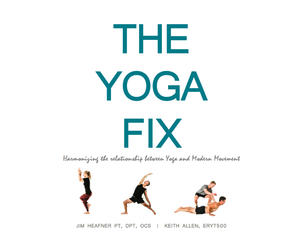
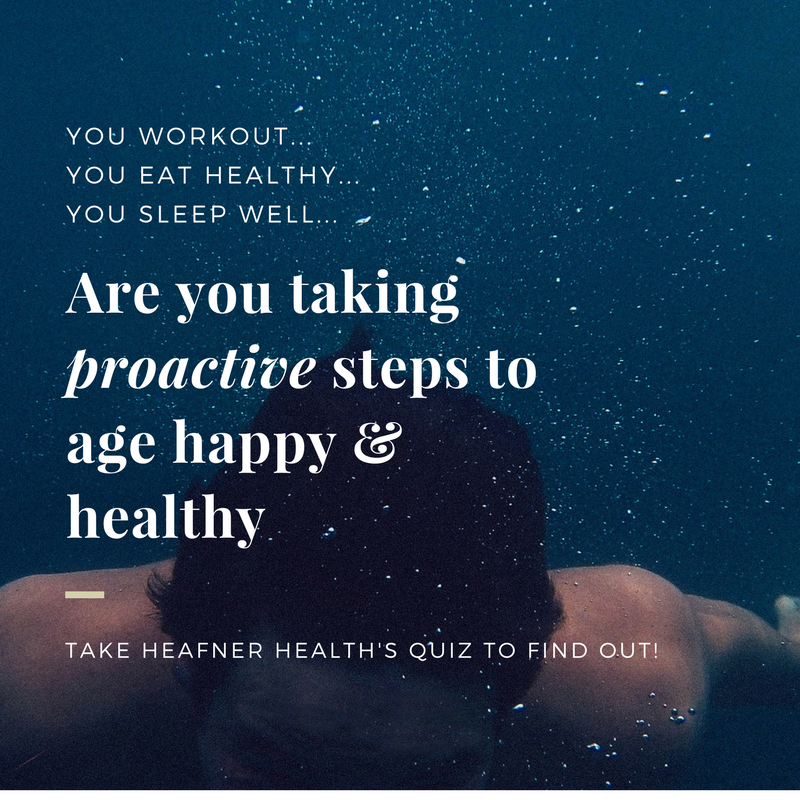
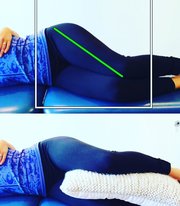
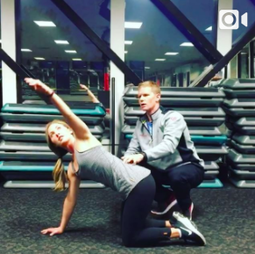
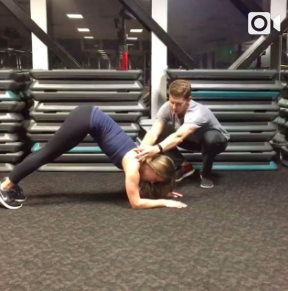
 RSS Feed
RSS Feed
